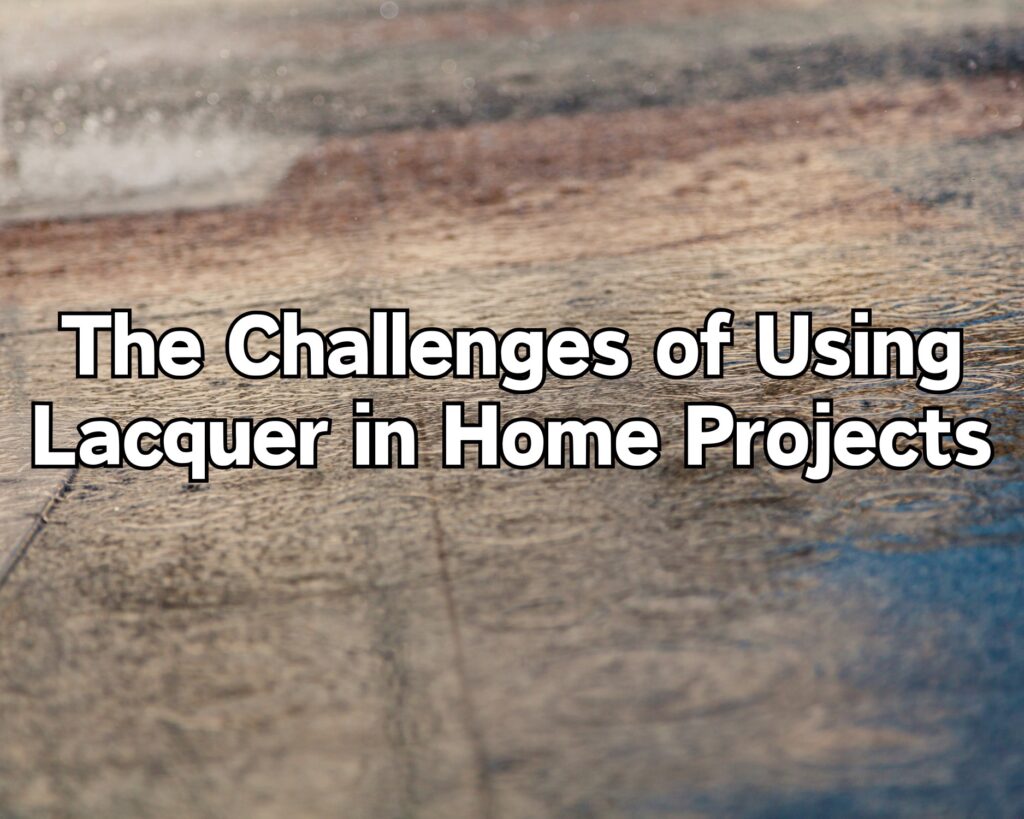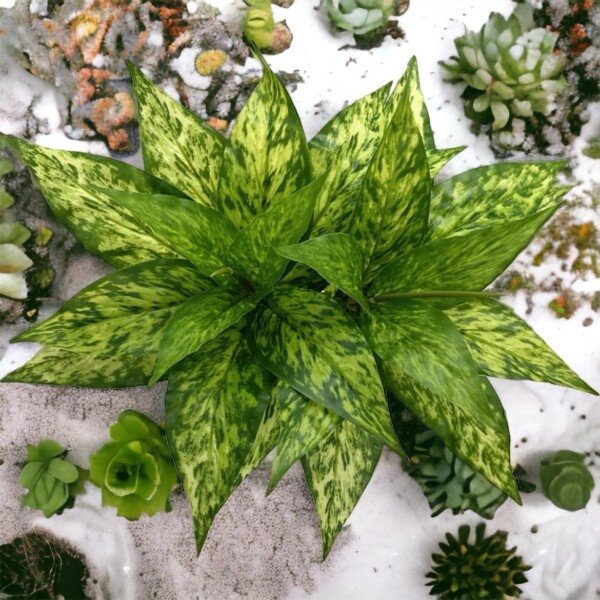Using lacquer for home improvement projects can be a double-edged sword. While it offers a durable and attractive finish, it also comes with significant drawbacks, particularly concerning its strong odor and the potential health risks associated with its fumes.
Understanding Lacquer and Its Odor
Lacquer is a popular finish used in woodworking and furniture projects due to its ability to provide a hard, durable, and glossy surface. However, one of its major downsides is the strong, often unpleasant smell it emits. This odor is due to the volatile organic compounds (VOCs) it contains, which evaporate into the air as the lacquer dries.

Health Risks of Lacquer Fumes
The fumes from lacquer are not just unpleasant; they can also be harmful to your health. Prolonged or high-level exposure to these fumes can lead to respiratory issues, headaches, dizziness, and irritation of the eyes, nose, and throat. In extreme cases, it can even affect the central nervous system.
Safety Precautions When Using Lacquer
- Adequate Ventilation: Ensure that your workspace is well-ventilated. Open windows and doors, and use fans to circulate fresh air.
- Use Protective Gear: Wear appropriate protective gear, such as masks or respirators specifically designed to filter out VOCs, as well as gloves and safety goggles.
- Limit Exposure: Try to limit the time you spend exposed to the fumes. Take frequent breaks to get fresh air.
- Follow Instructions: Always follow the manufacturer’s instructions and safety guidelines when using lacquer.
Alternatives to Traditional Lacquer
If the smell and health risks are a concern, consider using water-based lacquers or other low-VOC alternatives. These products are less harmful and emit a significantly reduced odor, making them a safer choice for indoor projects.
Pros and Cons of Using Lacquer Finish in Home Projects
Lacquer finishes are popular in woodworking and home renovation projects due to their distinct qualities. However, like any material, they come with their own set of advantages and disadvantages. Understanding these can help you make an informed decision about whether lacquer is the right choice for your project.
Pros of Using Lacquer Finish
- Durability: Lacquer provides a hard, durable finish that is resistant to damage from impacts, water, and chemicals, making it ideal for furniture and cabinetry.
- Fast Drying: One of the biggest advantages of lacquer is its fast-drying nature, allowing for quicker completion of projects.
- High Gloss Finish: Lacquer is known for its ability to produce a high gloss and clear finish, enhancing the natural beauty of wood.
- Ease of Application: It can be easily applied with a brush or sprayer and is generally more forgiving than other finishes, like varnish.
- Repairability: Unlike some other finishes, lacquer can be easily repaired if it gets chipped or scratched.
Cons of Using Lacquer Finish
- Strong Odor: As mentioned earlier, lacquer emits a strong odor due to VOCs, which can be unpleasant and harmful.
- Health Risks: The fumes from lacquer are hazardous and can cause respiratory issues and other health problems with prolonged exposure.
- Flammability: Lacquer is highly flammable, both in liquid form and its fumes, posing a significant fire risk during application.
- Environmental Concerns: The high VOC content in traditional lacquer finishes can contribute to environmental pollution.
- Frequent Maintenance: Although durable, lacquer finishes can degrade over time, especially under UV exposure, requiring regular maintenance and recoating.
Safer Alternatives
Given the cons, particularly the health and environmental concerns, many turn to safer alternatives like water-based lacquers or other low-VOC finishes. These alternatives offer similar benefits without the significant drawbacks of traditional lacquer finishes.
Exploring Alternatives to Lacquer: The Benefits of Polycrylic
When considering alternatives to lacquer for your home projects, Polycrylic stands out as a popular and effective option. One such product, the Minwax 65555 Clear Polycrylic Water-Based Protective Finish Gloss, offers several advantages over traditional lacquer finishes.
Advantages of Polycrylic
- Non-Yellowing: Unlike some lacquers and other finishes, Polycrylic doesn’t yellow over time. This makes it ideal for maintaining the true color and appearance of your woodwork or painted surfaces. The Minwax 65555 Clear Polycrylic is a perfect example of this quality.
- Low Odor: Polycrylic has a very minimal odor compared to lacquer, making it more suitable for indoor use and less likely to cause discomfort or health issues during application.
- Water-Based Formula: Being water-based, Polycrylic is easier to clean up and less harmful to the environment. It also contributes to the product’s low odor and reduced VOC emissions. The Minwax 65555 Clear Polycrylic is an excellent choice for those looking for an eco-friendlier option.
- Durability: Polycrylic offers a durable coating that resists water, stains, and general wear and tear, making it a great choice for furniture, cabinets, and other wood projects.
- Ease of Use: It can be easily applied with a brush or sprayer and dries quickly, similar to lacquer, but without the associated fumes and hazards. The Minwax 65555 Clear Polycrylic is user-friendly, even for beginners.
- Versatility: Polycrylic is suitable for use on a variety of surfaces, including wood, paint, and even metal, providing a versatile option for different project needs.
In conclusion, Polycrylic, particularly the Minwax 65555 Clear Polycrylic Water-Based Protective Finish Gloss, is an excellent alternative to traditional lacquer finishes. Its non-yellowing property, low odor, environmental friendliness, durability, ease of use, and versatility make it a superior choice for many home improvement projects. For more information and to purchase this product, visit Minwax 65555 Clear Polycrylic on Amazon.
Comparing Lacquer to Alternative Finishes
When selecting a finish for woodworking or home improvement projects, it’s important to understand how different options compare. Here, we’ll look at lacquer and contrast it with some popular alternatives, including Polycrylic, to help you make an informed decision.
Lacquer
- Finish Quality: Lacquer provides a high-gloss, durable finish that enhances the wood’s natural beauty.
- Drying Time: It dries quickly, allowing for faster project completion.
- Application: Can be applied with a brush or sprayer but requires skill for a smooth finish.
- Odor and VOCs: Emits strong fumes and high levels of VOCs, requiring good ventilation.
- Durability: Offers excellent durability but may yellow over time, especially when exposed to sunlight.
- Repairability: Easy to repair and refinish.
Polycrylic (e.g., Minwax 65555 Clear Polycrylic)
- Finish Quality: Provides a clear finish that doesn’t yellow over time, maintaining the original color and appearance.
- Drying Time: Dries quickly, similar to lacquer.
- Application: Easier to apply than lacquer, making it suitable for DIYers.
- Odor and VOCs: Low odor and low VOCs, making it safer for indoor use.
- Durability: Resistant to water and general wear, though may not be as hard as lacquer.
- Repairability: Can be repaired, but the process might be more involved than with lacquer.
Polyurethane
- Finish Quality: Available in various sheens, polyurethane provides a durable finish.
- Drying Time: Generally takes longer to dry than lacquer or Polycrylic.
- Application: Can be applied with a brush; oil-based versions can be challenging to apply evenly.
- Odor and VOCs: Oil-based polyurethane emits strong odors and VOCs; water-based versions are less so.
- Durability: Highly durable, making it suitable for high-traffic areas.
- Repairability: Repair can be more difficult, often requiring sanding and refinishing.
Shellac
- Finish Quality: Gives a natural, warm finish with a moderate sheen.
- Drying Time: Dries quickly, facilitating faster work.
- Application: Can be brushed or sprayed on; relatively easy to work with.
- Odor and VOCs: Low odor and low in VOCs.
- Durability: Less durable than other finishes; susceptible to water and heat damage.
- Repairability: Easy to repair and touch up.
Questions and Answers About Using Lacquer and Other Finishes
What are the main benefits of using lacquer over other finishes? Lacquer is favored for its ability to provide a high-gloss, durable finish that enhances the wood’s natural beauty. It dries quickly, allowing for faster project completion, and can be easily repaired or refinished. However, it does emit strong fumes and requires good ventilation during application.
Is Polycrylic a better alternative to lacquer for DIY projects? Polycrylic, like the Minwax 65555 Clear Polycrylic, can be a better choice for DIY projects due to its ease of application, low odor, and low VOC content. It provides a clear finish that doesn’t yellow over time, making it suitable for maintaining the original color and appearance of the project.
Can polyurethane be used in place of lacquer for a durable finish? Yes, polyurethane is a good alternative to lacquer if you’re looking for durability, especially in high-traffic areas. It’s available in various sheens and is highly resistant to water and general wear. However, it generally takes longer to dry and can emit strong odors, particularly in its oil-based form.
How does shellac compare to lacquer in terms of application and durability? Shellac is easier to apply than lacquer and is known for its natural, warm finish. It dries quickly, which is advantageous for fast-paced projects. However, in terms of durability, shellac is less robust than lacquer, being more susceptible to water and heat damage.
Are there any eco-friendly alternatives to traditional lacquer and polyurethane? Water-based versions of finishes like Polycrylic and polyurethane are more eco-friendly alternatives. They emit lower levels of VOCs and have a reduced environmental impact. Products like the Minwax 65555 Clear Polycrylic are examples of such eco-friendly options.
What safety precautions should be taken when applying lacquer? When applying lacquer, it’s crucial to work in a well-ventilated area to avoid inhaling fumes. Wearing protective gear such as masks or respirators, gloves, and safety goggles is also recommended. Additionally, due to its flammability, keep lacquer away from open flames and heat sources.
Can lacquer finishes be used on outdoor projects? Lacquer can be used on outdoor projects, but it may not be the best choice due to its susceptibility to UV damage and yellowing over time. For outdoor projects, finishes that are specifically formulated to withstand the elements, like certain types of polyurethane, might be more suitable.
Further Reading on DIY Home Improvement and Finishing Techniques
For those interested in diving deeper into home improvement and various finishing techniques, DIY Home Wizard offers a range of insightful articles. Here are some that you might find particularly useful:
- Conquer Stubborn Stains: Discover the Best Stain Remover for Impeccable Fabrics: This article provides valuable information on tackling tough stains, an essential read for anyone looking to maintain the pristine condition of their fabrics.
- Crafting Unique Indoor Plant Pot Holders: A DIY Guide: For those who love to add a touch of greenery to their homes, this DIY guide offers creative ideas for crafting unique plant pot holders.
- Installing Underground Electric for Your Pool: Say Goodbye to Extension Cords: This article is a must-read for pool owners, providing a step-by-step guide on installing underground electric systems for pools, enhancing safety and convenience.
As an Amazon Associate we earn from qualifying purchases through some links in our articles.



